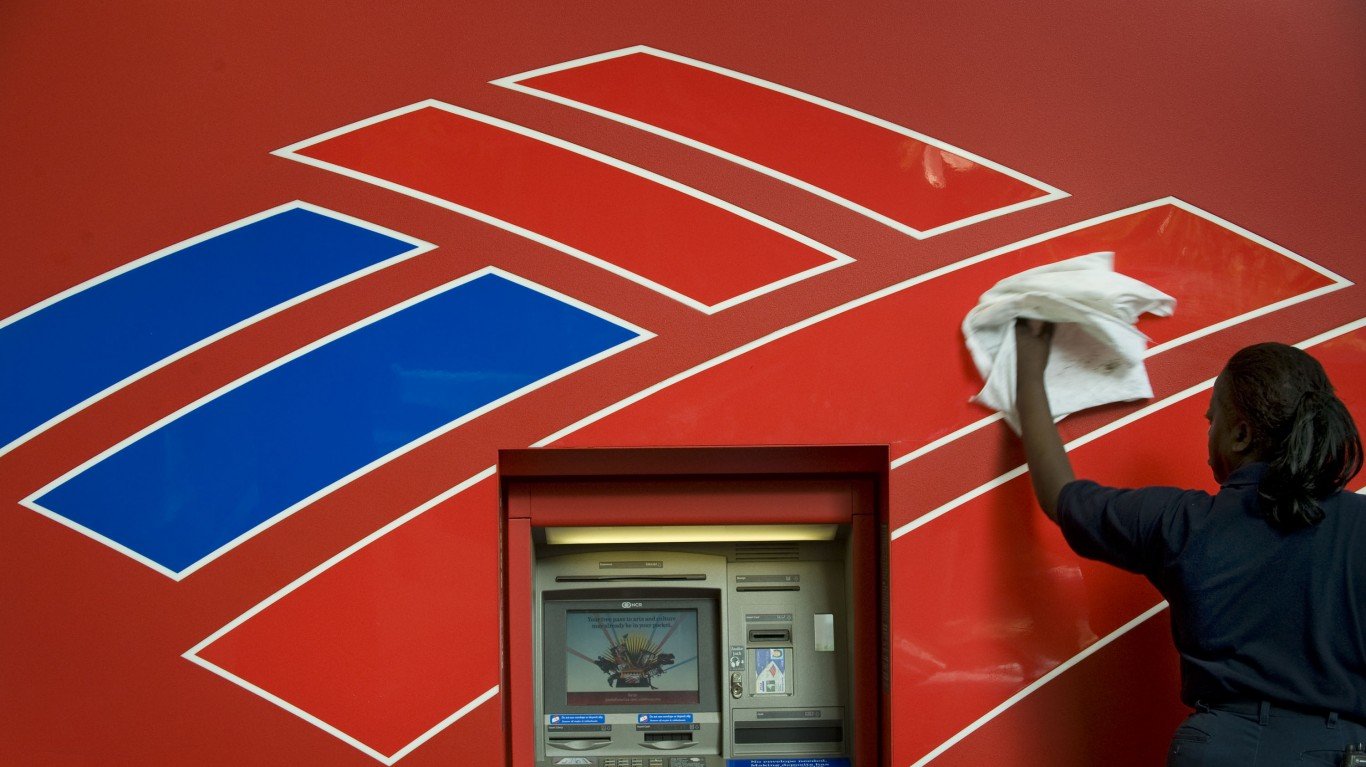

The three major U.S. equity indexes closed mixed on Thursday, with the S&P 500 and the Nasdaq hammered by weak reports from tech megacaps. The Dow Jones industrials ended the day up 0.61%, the S&P 500 closed 0.61% lower and the Nasdaq fell by 1.63%. Five of 11 sectors closed higher, led by industrials (1.14%) and financials (0.75%). Communications services and tech trailed (down 4.12% and 1.25%, respectively). The real estate sector closed flat.
The monthly report on personal consumption expenditures (PCE) was released before U.S. markets open Friday morning. Income rose by 0.4%, above expectations and equal to the August reading. Spending rose 0.6%, also above expectations and equal to the August report.
All three major indexes traded lower in Friday’s premarket but headed higher after the opening bell. The Dow was last seen up by 1.3%, while the S&P 500 and the Nasdaq were each up by about 0.7%.
After U.S. markets closed Thursday, Amazon reported adjusted earnings per share (EPS) that beat estimates by a penny. The e-commerce behemoth missed the consensus revenue estimate by about $370 million. Amazon also issued downside revenue guidance well below the consensus estimate. Shares traded 10% lower early Friday.
Apple reported beats on both the top and bottom lines. Quarterly services revenue was short of estimates, as were iPhone 14 sales and iPad revenue. CEO Tim Cook said the company would slow its new hiring. The stock traded up 4% early Friday.
Intel beat the consensus EPS estimate but missed on revenue. Demand slowed more than expected. But the earnings number outweighed everything else, and shares traded up 7% Friday morning.
T-Mobile missed the revenue estimate but beat on earnings. The mobile services provider added 1.6 million net subscribers in the quarter and announced a $14 billion buyback program with $2 billion in repurchases to come by end of this year. Shares traded up more than 6%.
U.S. Steel beat estimates on both the top and bottom lines. Shares traded down fractionally.
Before markets opened Friday morning, Chevron hammered estimates on both the top and bottom lines. Higher prices for crude oil and refined products led to higher margins. No surprises there. Chevron is expected to raise its capital spending by around 20% next year to around $18 billion. Shares traded up about 2%.
Exxon Mobil, like Chevron, blasted consensus earnings and revenue estimates. The energy giant posted profits of nearly $20 billion, its best quarterly total ever. Exxon has no plans to boost capital spending significantly next year. Shares traded up about 3% in Friday morning.
NextEra Energy beat both top-line and bottom-line estimates. It reaffirmed fiscal 2022 EPS guidance and issued EPS guidance for 2023. The stock traded up almost 3%.
No notable earnings reports are due out Friday afternoon. Before U.S. markets open on Monday, coal miner Alliance Resources and chipmaker ON Semiconductor will report quarterly results.
Here is a preview of what analysts are expecting to hear Monday afternoon and Tuesday morning from these three companies.
NXP Semiconductors
Since posting an all-time high share price in early December, Netherlands-based NXP Semiconductors N.V. (NASDAQ: NXPI) has seen more than 38% of that high price melt away. The stock is down nearly 25% over the past 12 months and posted a 52-week low earlier this month. The market for analog chips may not yet have reached a bottom, and at least one analyst figures demand will continue falling into next year. NXP reports quarterly results after markets close on Monday.
Of 27 analysts covering the stock, 14 have Buy or Strong Buy ratings and 12 more rate the shares at Hold. At a recent price of around $145.10 a share, the upside potential based on a median price target of $188.00 is almost 30%. At the high price target of $260.00, the upside potential is 79.2%.
Third-quarter revenue is expected to come in at $3.42 billion, which would be up 3.4% sequentially and by 20.0% year over year. Adjusted EPS are forecast at $3.66, up 3.9% sequentially and 28.9% higher year over year. For the full 2022 fiscal year, analysts are looking for EPS of $114.13, up 31.4%, on sales of $13.3 billion, up 20.2%.
NXP stock trades at about 10.3times expected 2022 EPS, 10.5 times estimated 2023 earnings of $13.81 and 9.5 times estimated 2024 earnings of $15.30 per share. The stock’s 52-week range is $132.08 to $239.91. NXP pays an annual dividend of $3.38 (yield of 2.29%). Total shareholder return for the past 12 months was negative 23.2%.
Sofi Technologies
Decentralized financial services firm SoFi Technologies Inc. (NASDAQ: SOFI) has posted a share price drop of more than 72% over the past 12 months and is down nearly 78% from its all-time high in June of last year. The company reports results first thing Tuesday morning.
On the plus side, Sofi owns a bank charter, allowing it to offer checking and savings accounts and make loans. The company also has a presence in providing support for payment cards and clearing house transactions. Because its primary business is lending, higher interest rates should help, provided consumers remain willing to spend.
Of 13 analysts covering Sofi stock, eight have a Buy or Strong Buy rating and the other five have Hold ratings. At a share price of around $540, the upside potential based on a median price target of $8.00 is nearly 50%. At the high target of $15.00, the upside potential is about 180%.
Analysts expect the company to report third-quarter revenue of $391.78 million, up 10.0% sequentially and 42.3% higher year over year. Sofi is expected to post a loss per share of $0.07, better than the prior quarter’s loss of $0.11 per share and the year-ago quarterly loss of $0.12. For the 2022 fiscal year, analysts expect an adjusted loss of $0.32, compared with a loss per share of $0.66 last year. Revenue for the year is currently pegged at $1.5 billion, up 48.4%.
SoFi is not expected to post a profit in 2022, 2023 or 2024. The stock’s 52-week trading range is $4.77 to $24.65, and SoFi does not pay a dividend. Total shareholder return for the past year is negative 72.2%.
Uber
Over the past year, shares of Uber Technologies Inc. (NYSE: UBER) have declined by almost 38%. Since posting a 52-week low on June 30, the stock has added about 36%. the company is set to report quarterly earnings before markets open on Tuesday.
The company has just rolled out a global ad unit that expects to add $1 billion in revenue within two years by displaying promotional ads in its cars and on its app. Uber’s major overhang is a U.S. Labor Department proposed rule that would force the company to classify drivers as employees, not contractors. That would cause labor costs to soar for Uber, Lyft and DoorDash, to name a few.
Analysts remain solidly bullish on Uber. Of 46 brokerages covering the stock, 41 have a Buy or Strong Buy rating and five more rate the shares at Hold. At a share price of around $27.80, the potential upside based on a median price target of $43.50 is 56.5%. At the high target of $75.00, the upside potential is 170%.
The consensus revenue estimate for the third quarter is $8.13 billion, up 0.7% sequentially and by 68.0% year over year. Uber is expected to post EPS of $0.06 in the quarter, compared with the prior quarter’s per-share loss of $0.03 and last year’s loss per share of $0.07. For the full 2022 fiscal year, analysts expect a loss per share of $3.62 compared with last year’s EPS of $0.33 on revenue of $31.31 billion, up nearly 80%.
Uber’s stock trades at about 35.3 times estimated 2023 earnings of $0.79 and 20.6 times estimated 2024 earnings of $1.35 per share. The stock’s 52-week range is $19.89 to $48.74. Uber does not pay a dividend. Total shareholder return for the past 12 months is negative 37.8%.
Take This Retirement Quiz To Get Matched With A Financial Advisor (Sponsored)
Take the quiz below to get matched with a financial advisor today.
Each advisor has been vetted by SmartAsset and is held to a fiduciary standard to act in your best interests.
Here’s how it works:
1. Answer SmartAsset advisor match quiz
2. Review your pre-screened matches at your leisure. Check out the
advisors’ profiles.
3. Speak with advisors at no cost to you. Have an introductory call on the phone or introduction in person and choose whom to work with in the future
Take the retirement quiz right here.
Thank you for reading! Have some feedback for us?
Contact the 24/7 Wall St. editorial team.
 24/7 Wall St.
24/7 Wall St. 24/7 Wall St.
24/7 Wall St. 24/7 Wall St.
24/7 Wall St.


